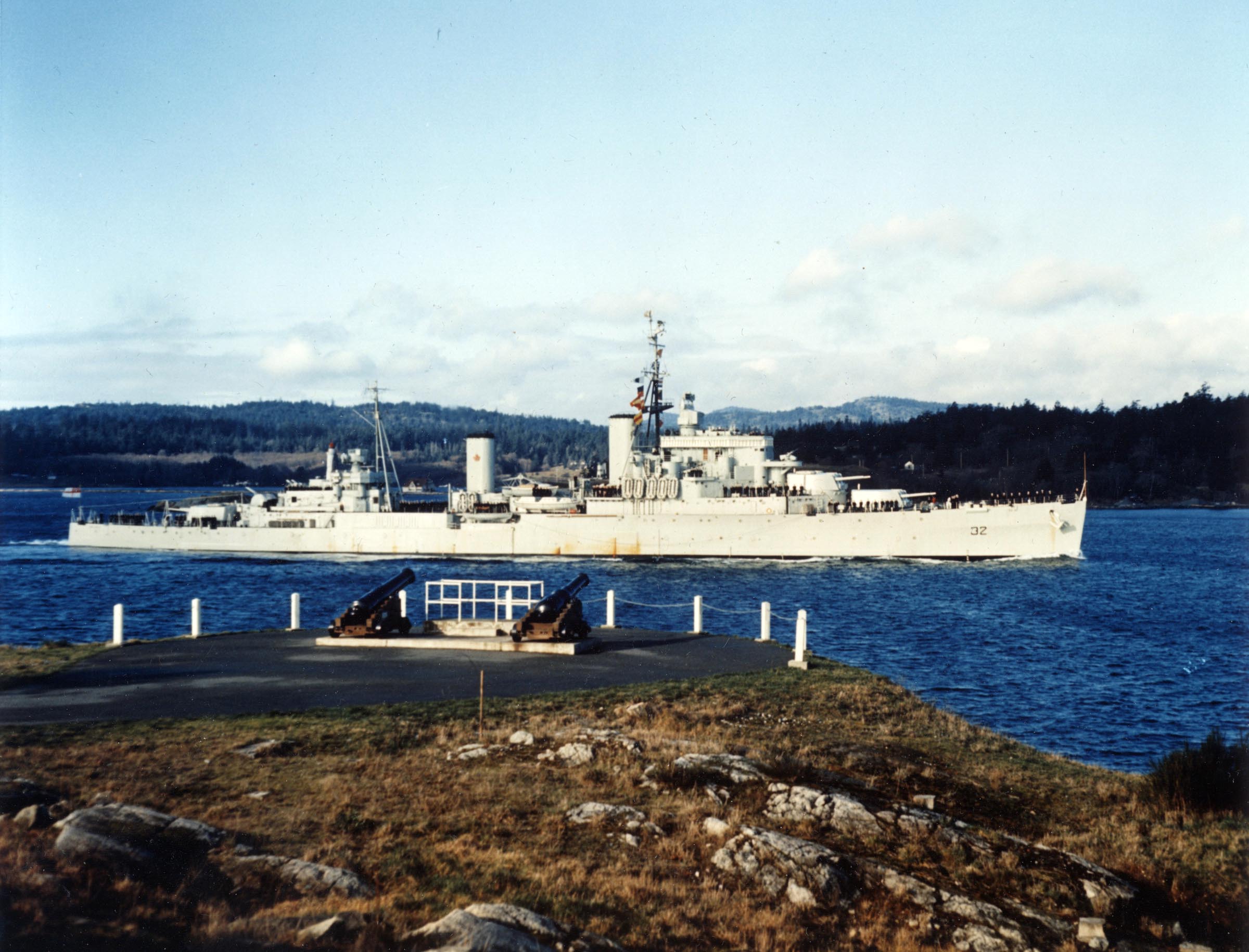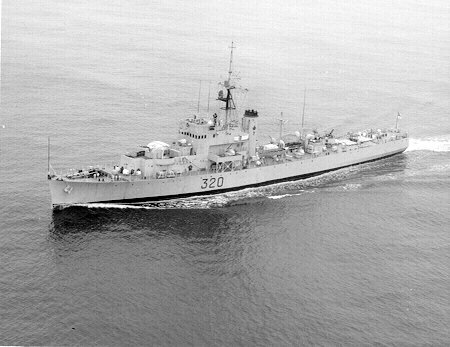Slightly

ff topic: but ...
Some time ago I came across something that complained that "we" (which ever country it was) was building yet another
light cruiser sized
destroyer that was to be armed like a
frigate. My assumption was, and remains, that the complainer was talking about conventional guns and was thinking of warships circa 1960:
HMCS Ontario a light cruiser that served in the RCN until 1958 HMCS Victoriaville, a Prestonian class frigate that served in the RCN until 1973
8,800 tons 2,300 tons
Now, when I was serving, back in the 1990s, I had a very useful, UNCLASS, graphic that showed a ship with several "domes" over it showing very approximate radar coverages ("ranged" by time) and weapon coverage, ranged by type: guns missiles, etc. It wasn't terribly accurate but I found it useful, especially when briefing non-military audiences, to explain why we needed what many said was so much (too much) radio spectrum to detect, identify, track and engage various types of targets at various ranges. I also had another graphic, from the USN, as I recall, that showed something similar but for a carrier task force and I used it to explain that we could and routinely did
integrate radar signals and fire control systems from several ships to get a complete picture and to engage the right targets with the right weapons at the right time.
Two questions:
1. Do graphics like those, updated to take account of the 20 years that have passed since I retired, still exist? and, if they exist at all
2. Can someone share them here, or are they "for official use only?"
I'm a bit concerned that some (many) people do not grasp the fact that modern warships need to be bigger to accommodate modern missile systems with all the paraphernalia that they have, and that putting bloody great radar antennæ on masts requires some "mass" beneath them just to keep the whole damned shebang upright.







